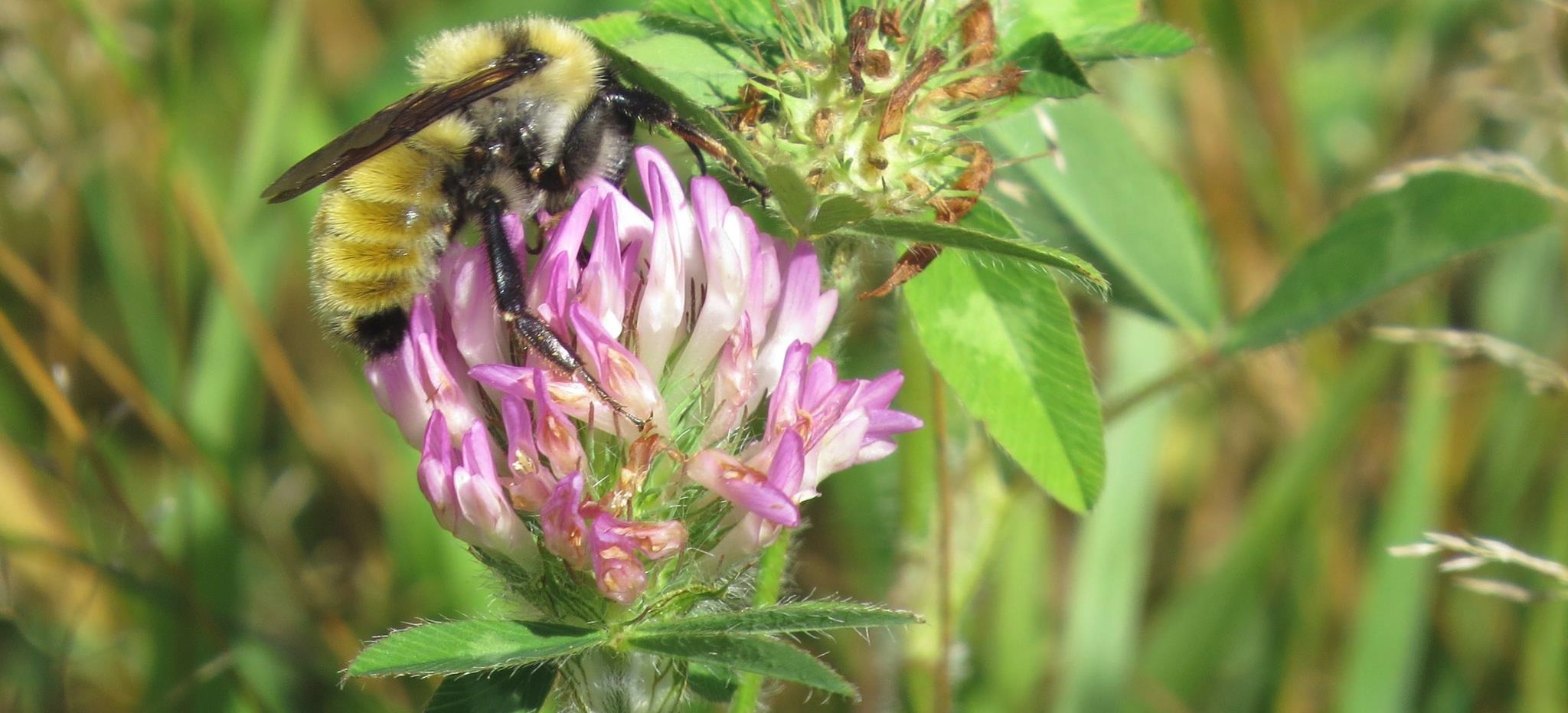Recorded Programs
Pollinator Action Plan
In March 2023, LLCT Staff shared highlights from the past three years as the organization as implemented the Pollinator Action Plan. Watch here.
In April 2021, Evan Abramson gave an overview of the Pollinator Action Plan. Participants also had the opportunity to ask site specific questions about plant selection. Watch here.
In March 2020, Evan Abramson gave a recorded lecture on planting for biodiversity. Evan also shared preliminary plans for the Demonstration Pollinator Garden at Birches School (see the Garden and Lawn Toolkit for final designs). Thank you to Lincoln Cable and Jim Cunningham for recording the presentation. Watch here.
In January 2020, Dr. Gegear kicked off LLCT’s Pollinator Action Plan with a great overview of pollination systems and functional diversity. As part of this three year LLCT initiative, Dr. Gegear will be surveying bumblebee populations in Lincoln and in coordination with Evan Abramson, recommending habitat enhancements and targeted management strategies to best support increased diversity of bumblebees in Lincoln. Thank you to Weston Media Center for recording the presentation. Watch here.
Bumblebee Identification
In 2023, Norman Levey gave a zoom presentation on backyard bees in Lincoln. The zoom gives an overview of the diversity of native bees that can be observed in Lincoln. Watch here.
In 2020, Norman Levey (The Natural World) filmed this virtual bumblebee identification workshop. Learn how to identify seven species of bumblebees based on their anatomy, coloration, and behavior. Watch here.
In 2020, Dr. Gegear recorded this 30-minute tutorial on using the Beecology web application to upload videos for identification. Submissions to Beecology contribute to Dr. Gegear’s research. Watch here.
Related Pollinator Content
In 2022, Professor James Lowenthal gave a program on light pollution and its impacts on pollinators. Watch here.
Later in 2022, Dr. Avalon Owens extended the light pollution discussion by sharing her research on fireflies and light pollution. Watch here.
In 2023, Diana Rice-Sheahan presented on creating pocket pollinator meadows. She shared site preparation strategies and photos from her own pollinator meadow garden. Watch here.
Interactive Map of Pollinator Spaces in Lincoln
As Lincoln’s Pollinator Corridor continues to grow, we celebrate the more than 50 participants who planted nearly 2,000 native, pollinator-supporting plants around Lincoln and in surrounding communities in 2020. Check out this map to see a visual representation of the corridor! Names and addresses have been removed for privacy reasons. Also, please note that these sites are private homes and gardens. LLCT’s Pollinator Meadow is open to the public and located in the field behind the tennis courts at the Lincoln Public Schools. Once completed, there will be opportunities to explore the Birches School Demonstration Garden as well.
Printed Resources and Other Links
Dr. Gegear’s Checklist for Functionally Diverse Habitat (PDF) Reference the checklist to ensure that your pollinator habitat is providing functionally diverse habitat.
Dr. Gegear’s Plant List for a Functionally Diverse Habitat (web link) Visit Dr. Gegear’s website for the latest version of his Plant List for Pollinators at Risk. For each plant, you can see bloom time, nectar/pollen resources, and what species of pollinators are supported.
Guide to Creating a Pollinator Friendly Space (PDF) Use this quick reference to tips on creating pollinator friendly space.
- Stop all pesticide use.
- Reduce your mowing frequency. Dedicate less area to lawn and more to native flowering plants that sustain at-risk pollinators. Allow lawn “weeds” like dandelion to grow; they are an important food source for bumblebees!
- Manage and remove invasive species.
- Do not use cultivars! Many produce beautiful flowers, but poor quality pollen and nectar — or none at all.
- Use neonicotinoid and pesticide-free soil, seed, plugs, and plants. Always ask your source if their products are free and clear of harmful chemicals.
- Source seed and plants that are native to Massachusetts and New England.
- Choose plants that provide nectar and/or pollen, function as a host plant, or provide nesting habitat for at-risk wild pollinators, from early spring through late fall.
- Discuss your landscaping objectives with your landscaper; make sure they will not apply or pull anything without your knowledge and consent!
- Eliminate light pollution after dark by installing motion sensors and fully shielded lights. Red light is best.


